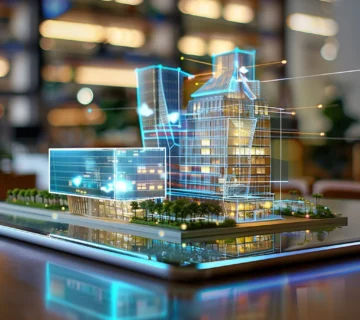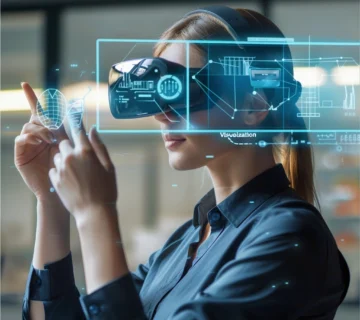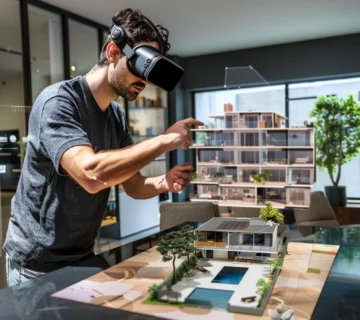Architectural Animation , Freeing Creative Force: Dive into Innovation
In the dynamic landscape of architectural animation evolution, where blueprints meet pixels and creativity intertwines with technology, the emergence of architectural animation marks a paradigm shift in the way we envision, communicate, and experience design. Beyond a mere visual aid, architectural animation is a symphony of innovation, where each frame resonates with the essence of creative thought, propelling structures from the realm of imagination into tangible, immersive realities.
Architectural animation, as a liberating force, transcends the static constraints of traditional design methods. It is a journey through the fluidity of space and time, a canvas where structures breathe, materials interact, and environments pulsate with vitality. This transformative process in architectural animation unleashes architects from the shackles of traditional mediums, enabling them to articulate their ideas with unprecedented depth and nuance.
As pixels converge to construct virtual worlds, architects become storytellers, weaving narratives that unfold organically within the digital realm. The narrative aspect of architectural animation not only communicates design intent but invites stakeholders into a dynamic dialogue, where the unfolding story becomes a shared experience. It is a fusion of the logical and the emotive, where concepts are not just seen but felt, resonating with the human experience.
Spatial choreography, a choreographed dance of form, function, and aesthetics, takes center stage in this animated symphony. Architects become spatial choreographers, orchestrating the interplay of light, shadow, and structure to compose a harmonious narrative. Through the manipulation of virtual elements, architects can explore the impact of spatial dynamics on user engagement, functionality, and overall design coherence, pushing the boundaries of what is conceivable in the built environment architectural animation.
Moreover, the democratization of design unfolds as a revolutionary democratization of ideas, transcending disciplinary boundaries and making architectural creativity accessible to a broader audience. As platforms evolve, architectural animation becomes a language spoken not only by architects but by communities, clients, and visionaries alike. This inclusive approach ensures that the built environment reflects the diverse tapestry of human experiences, aspirations, and needs.
In the chapters that follow, we embark on a profound exploration of these transformative dimensions, dissecting the intricate interplay of narrative storytelling, spatial choreography, and the democratization of design within the realm of architectural animation. Together, we unravel the layers of this digital canvas, discovering how it redefines the very essence of architectural creation, communication, and experience in our ever-evolving world.
Animation, once considered a whimsical art form reserved for the entertainment industry, has undergone a revolutionary transformation fueled by relentless innovation and in architectural rendering services. Beyond the realms of cartoons and feature films, animation has emerged as a dynamic force shaping industries, influencing design, and redefining the way we perceive and interact with visual content. In this exploration of innovation in animation, we unravel the multifaceted layers that contribute to its transformative power.
The advent of cutting-edge technologies has propelled Architectural Animation into uncharted territories. Traditional hand-drawn animation, while still cherished for its artistic merit, now coexists with a plethora of advanced techniques. Computer-generated imagery (CGI), 3D modeling, virtual reality (VR), and augmented reality (AR) have ushered in a new era of possibilities, breaking the barriers of what was once deemed achievable.
Innovations in rendering engines providing architectural animation and powerful graphic processing units (GPUs) have enabled animators to create visuals with unprecedented realism. The marriage of technology and creativity has given rise to animated worlds that blur the line between fiction and reality. Real-time rendering, a groundbreaking advancement, allows for instantaneous adjustments, fostering a more dynamic and interactive animation creation process.
Immersive Experiences: Architectural Animation Beyond the Screen
The innovation in animation extends beyond the confines of traditional screens, inviting audiences to step into immersive experiences. Virtual reality has emerged as a game-changer, offering a 360-degree canvas for storytelling. Viewers are no longer passive observers; they become active participants within the animated narrative, exploring environments from every angle and engaging with the story in ways previously unimaginable.
Augmented reality, on the other hand, overlays animated elements onto the real world, seamlessly blending digital and physical realms. This innovation has found applications in diverse fields, from education and healthcare to marketing and architecture. The ability to interact with animated content in real-time transforms static environments into dynamic, experiential spaces.
Data-Driven Animation: Personalizing the Narrative
In the era of big data, animation has embraced a data-driven approach to personalize and enhance storytelling. Machine learning algorithms analyze user preferences and behaviors, tailoring animated content to individual tastes. This not only enhances user engagement but also opens new frontiers for creators to experiment with personalized narratives.
Data-driven animation extends beyond mere customization; it allows for dynamic storytelling that adapts based on real-time input. Interactive narratives, where the viewer’s choices influence the direction of the story, exemplify the innovative fusion of animation and data. This dynamic form of storytelling not only captivates audiences but also marks a shift from passive consumption to active participation in the narrative.
Architectural animation in Education: Bridging Gaps with Innovations
The innovation in animation has found a particularly impactful niche in education. Traditional learning materials are being reimagined through animated content, catering to diverse learning styles and enhancing comprehension. Complex concepts are simplified through visually engaging animations, making educational content more accessible and enjoyable.
Interactive educational animations, often incorporating gamification elements, transform learning into an immersive experience. Virtual laboratories, historical reconstructions, and anatomical explorations become vivid and memorable, fostering a deeper understanding of subjects. As technology continues to advance, the boundaries of educational animation will likely expand, offering innovative solutions to bridge gaps in global education.
Sustainable Architectural Animation Practices: Nurturing Creativity Responsibly
Innovation in animation isn’t limited to technological advancements; it also extends to sustainable practices that prioritize environmental responsibility. As the animation industry grapples with the carbon footprint associated with rendering farms and energy-intensive processes, creators are exploring eco-friendly alternatives.
Cloud-based rendering services, which distribute rendering tasks across servers, reduce the need for individual powerhouse computers, minimizing energy consumption. Additionally, studios are adopting sustainable animation production practices, such as using renewable energy sources and implementing recycling initiatives. The focus on sustainability aligns animation with broader societal goals, reflecting a commitment to creativity that respects and preserves the environment.
Cross-Platform Integration: Architectural animation in Every Sphere
The boundaries between different media platforms are blurring, and animation is at the forefront of this cross-platform integration. Animated content seamlessly transitions from film and television to video games, social media, and even live performances. The adaptability of animation to various platforms enhances its reach and impact, making it a versatile tool for creative expression.
Social media platforms have become animation hubs, with short-form animated content gaining immense popularity. Animated GIFs, short clips, and motion graphics dominate feeds, capturing attention in a visually saturated online landscape. The ability of animation to convey complex messages succinctly has turned it into a powerful communication tool across diverse digital platforms.
Future Frontiers: AI-Generated Architectural Animation and Beyond
Looking ahead, the frontier of innovation in Architectural Animation stretches into the realm of artificial intelligence (AI). AI-generated Architectural Animation, where algorithms autonomously create animated sequences based on input parameters, represents a fascinating leap forward. This innovative approach has the potential to revolutionize the animation creation process, automating repetitive tasks and allowing artists to focus on creative decision-making.
Furthermore, advancements in haptic technology may introduce a tactile dimension to animated experiences. Viewers could feel the texture of animated objects or experience simulated movement, adding a sensory layer to the visual narrative. As animation continues to evolve, the merging of AI, haptics, and other emerging technologies holds the promise of pushing creative boundaries even further.
Innovation in animation has transformed it from a niche art form into a ubiquitous and influential medium. From technological breakthroughs to immersive experiences, personalized narratives, and sustainable practices, animation is continually pushing the boundaries of what is conceivable. As we navigate uncharted horizons, the fusion of creativity and innovation ensures that animation remains a dynamic force, shaping the visual landscape of the future.
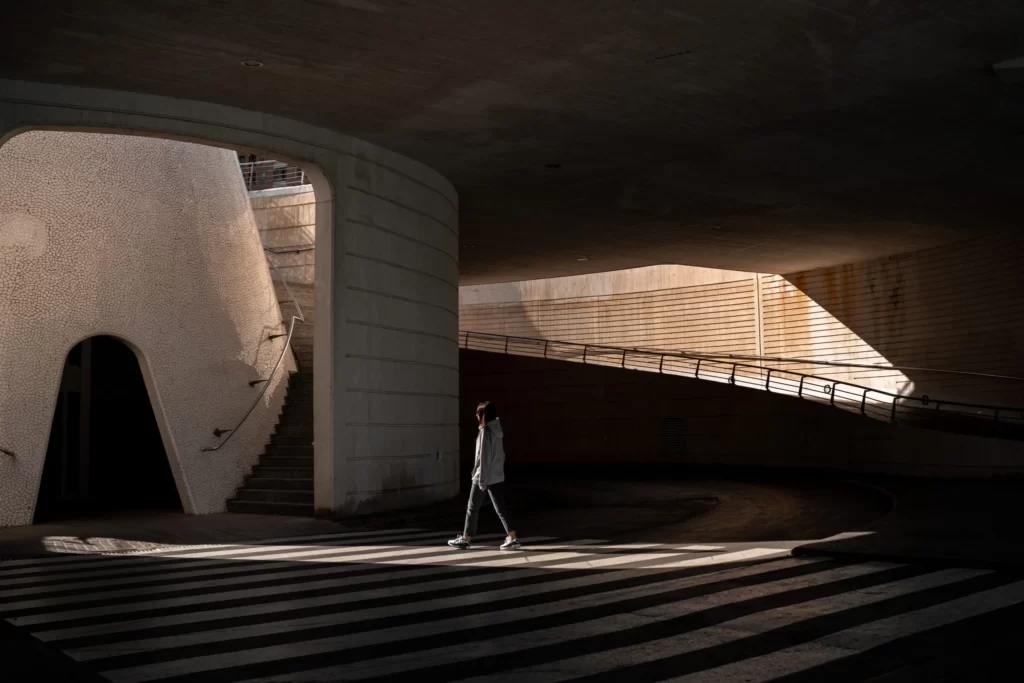
The Architectural Animation Revolution
Architectural animation stands at the forefront of a design revolution, unlocking new dimensions of creativity and expression. As architects increasingly turn to this dynamic medium, it becomes a powerful vehicle for conveying design intent, transcending the static limitations of traditional methods. This revolution is not just a technological evolution but a paradigm shift, where the fusion of artistic vision and cutting-edge tools unleashes a liberating force on the architectural canvas.
In the architectural animation revolution, the static blueprints and conceptual sketches transform into living, breathing entities. The lines on paper evolve into narratives that unfold in real-time, inviting viewers into a realm where spaces come alive, and emotions are woven into the very fabric of design. Architects, once bound by the constraints of two-dimensional representations, find themselves liberated in a three-dimensional world where their ideas can be experienced, not just observed.

Architectural Modeling: The Prelude to Animation Mastery
At the heart of architectural animation lies the intricate art of architectural modeling. It serves as the bedrock, the initial strokes in the canvas of creative freedom. Architects embark on a journey of exploration, leveraging modeling tools and materials to craft the emotional foundation of their designs. From digital blueprints to physical models, this phase sets the stage for the animation narrative, ensuring that every detail resonates with the intended emotional impact.
Architectural modeling is the architect’s palette, where ideas take shape and substance. It is the bridge between the abstract and the tangible, where the visions conceived in the mind transform into structures that tell stories. Every curve, every contour is carefully considered, not merely for its aesthetic appeal, but for the emotions it evokes. The choice of materials becomes crucial—a symphony of textures and colors that harmonize to create an emotional resonance within the model.
In the prelude to animation mastery, architects find themselves not bound by the constraints of the physical world. The digital realm becomes a playground where creativity knows no bounds. The tools at their disposal become extensions of their imagination, allowing them to sculpt emotions into every facet of the design. It is in this phase that the seeds of animation are planted, waiting to bloom into a captivating visual narrative.
Architectural Rendering Services: Crafting Visual Poetry
Architectural rendering services, an indispensable ally in the animator’s toolkit, play a pivotal role in transforming ideas into visual poetry. Through sophisticated software, architects can generate high-quality, emotionally charged images that serve as the visual palette for subsequent animations. Rendering services elevate the aesthetic appeal of architectural projects, creating a seamless transition between the static and dynamic realms.
The transition from modeling to rendering is a metamorphosis—a transmutation of raw concepts into visually stunning representations. It is in the realm of rendering that architects paint with light and shadow, breathe life into materials, and showcase the emotional resonance of their designs. Each rendered image is a snapshot of the narrative that awaits in the animated journey—a glimpse into the immersive experience that will captivate viewers.
Architectural rendering becomes the bridge between ideation and realization, where the intangible becomes tangible, and the potential of a design is brought to the forefront. It is in this visual poetry that clients, stakeholders, and the architect themselves can witness the emotional impact of the envisioned space. The rendering becomes a promise—a prelude to the animated symphony that will unfold, inviting viewers into a world where every frame tells a story.
Architectural Visualization: A Symphony of Imagination
Architectural animation is inherently intertwined with visualization, forming a symbiotic relationship that fuels innovation. Visualization becomes the canvas upon which architects paint their dreams, using tools and techniques to evoke emotional responses from stakeholders. This visual symphony becomes a compelling language, where every frame tells a story, inviting viewers to dive into the immersive world of architectural innovation.
In the symphony of imagination, architects transcend the traditional constraints of design communication. Static images are replaced by dynamic narratives, allowing viewers to witness the ebb and flow of spaces, the dance of light, and the emotional cadence of the architecture. Visualization becomes not just a means of conveying ideas but a journey—a visual odyssey that engages the senses and emotions.
The tools of visualization become extensions of the architect’s storytelling prowess. Three-dimensional modeling and rendering software act as brushes, allowing them to paint emotional landscapes MOSTLY IN Architectural Animation. The interplay of light and shadow, the choice of materials, and the spatial relationships are orchestrated to create an emotional resonance that transcends the visual. Visualization becomes the bridge between concept and experience—a prelude to the animated journey that awaits.
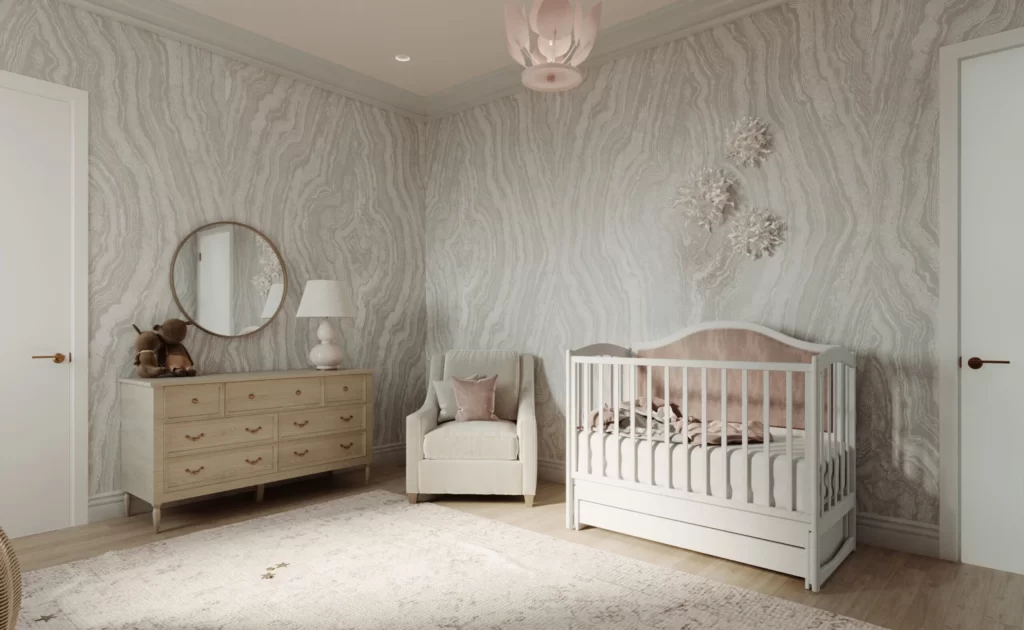
Navigating Architectural Walkthrough: A Journey of Discovery
Architectural walkthroughs, an integral part of the animation narrative, invite individuals to embark on a journey of discovery. This immersive experience allows stakeholders to navigate through the virtual spaces, interacting with the design on an emotional level. As architectural walkthroughs become a bridge between concept and reality, the freeing creative force of animation is palpable, offering a real-time connection with the envisioned architectural landscape.
The journey of discovery begins as viewers step into the animated realm. It is no longer a passive observation but an active engagement—a dance through spaces that respond to the rhythm of emotions. Architectural walkthroughs transcend the traditional static presentations, providing an interactive experience where users can explore, critique, and feel the design in real-time.
As users navigate through the animated landscapes, they become part of the narrative. The emotional impact of design decisions is palpable as they move through spaces, witnessing the play of light, the tactile qualities of materials, and the overall ambiance of the environment. Architectural walkthroughs become a collaborative experience, where architects and stakeholders can align their visions, refine details, and ensure that the emotional resonance of the design is authentically conveyed.
Animation as a Design Language
In the vibrant landscape of Vancouver, animation has become a dynamic design language that architects use to articulate their visions. Traditional design presentations, constrained by static images and blueprints, are now complemented and elevated by animated narratives. Architectural services leverage animation to showcase the life within designs—the play of sunlight through a building’s façade, the ebb, and flow of communal spaces, and the seamless integration of structures into their surroundings.
Urban Renewal and Revitalization: Architectural Animation Transformation
“Urban renewal and the built environment have become two of the hottest topics in urban planning studies. Although existing literature has started to examine both of them from different perspectives, a comprehensive review with a bibliometric analysis is necessary to fully reveal the association between them.” [HAO WANG] As Vancouver undergoes urban renewal and revitalization projects, animation becomes the catalyst for envisioning transformative change. Architectural services utilize animation to portray the metamorphosis of neighborhoods, the repurposing of urban spaces, and the integration of innovative infrastructure. This dynamic storytelling through animation captures the spirit of renewal, fostering a sense of anticipation and excitement within the community.
Architectural Walkthroughs: Navigating Vancouver’s Future in Architectural Animation
Architectural walkthroughs, a specialized form of animation, play a pivotal role in navigating Vancouver’s architectural future. Whether it’s exploring the interiors of futuristic skyscrapers or meandering through sustainable residential developments, these walkthroughs provide a tangible sense of the envisioned spaces. Vancouver’s architectural services harness the immersive quality of walkthrough animations to engage prospective residents, investors, and the wider community in the city’s evolving narrative.
Vancouver’s Architectural Landmarks: Animated Icons
Vancouver boasts architectural landmarks that define its skyline and contribute to its cultural identity. From the iconic Canada Place to the innovative design of the Vancouver Convention Centre, these structures are not just static monuments but living entities within the urban fabric. Animation breathes life into these landmarks, showcasing their evolution over time, the stories they tell, and their enduring impact on the city’s architectural legacy.
Technology and Creativity: The Vancouver Blend
The convergence of technology and creativity is at the heart of Vancouver’s architectural services. The city’s animation excellence is a testament to the seamless integration of advanced tools, such as 3D modeling software and virtual reality applications, with the boundless creative spirit of its architects. Vancouver’s architects embrace the latest technological innovations to amplify their design visions, creating a harmonious blend that defines the city’s architectural landscape.
Community Engagement through Architectural Animation
Beyond the technical and aesthetic aspects, animation in Vancouver’s architectural services fosters community engagement. Public spaces, future developments, and infrastructure projects are communicated to the community through animated presentations. This inclusive approach invites residents to actively participate in the shaping of their city. Animation becomes a democratic tool that empowers the community to visualize, critique, and contribute to the ongoing narrative of Vancouver’s architectural evolution.
The Future of Architectural Animation services in Vancouver
As Architectural services in Vancouver which is based on architectural model making materials list, continue to push the boundaries of design, the role of animation is set to evolve further. The future holds the promise of even more immersive experiences, interactive narratives, and a deeper integration of animation into the entire architectural process. Vancouver’s architects are poised to lead the way, leveraging animation not just as a visualization tool but as a dynamic force that propels the city into new realms of architectural excellence.
In conclusion, Vancouver stands as a testament to the transformative power of animation in architecture. The city’s architectural services have embraced animation as a language, a bridge, and a catalyst for innovation. As Vancouver continues to shape its skyline and redefine urban living, animation remains a key element in telling the stories of architectural evolution, sustainability, and community engagement.



